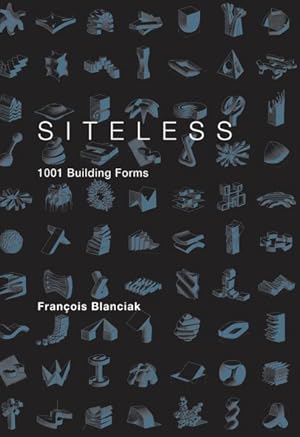françois blanciak (48 Ergebnisse)
Suchfilter
Produktart
- Alle Product Types
- Bücher (48)
- Magazine & Zeitschriften (Keine weiteren Ergebnisse entsprechen dieser Verfeinerung)
- Comics (Keine weiteren Ergebnisse entsprechen dieser Verfeinerung)
- Noten (Keine weiteren Ergebnisse entsprechen dieser Verfeinerung)
- Kunst, Grafik & Poster (Keine weiteren Ergebnisse entsprechen dieser Verfeinerung)
- Fotografien (Keine weiteren Ergebnisse entsprechen dieser Verfeinerung)
- Karten (Keine weiteren Ergebnisse entsprechen dieser Verfeinerung)
- Manuskripte & Papierantiquitäten (Keine weiteren Ergebnisse entsprechen dieser Verfeinerung)
Zustand Mehr dazu
- Neu (36)
- Wie Neu, Sehr Gut oder Gut Bis Sehr Gut (6)
- Gut oder Befriedigend (5)
- Ausreichend oder Schlecht (Keine weiteren Ergebnisse entsprechen dieser Verfeinerung)
- Wie beschrieben (1)
Einband
- alle Einbände
- Hardcover (Keine weiteren Ergebnisse entsprechen dieser Verfeinerung)
- Softcover (46)
Weitere Eigenschaften
- Erstausgabe (Keine weiteren Ergebnisse entsprechen dieser Verfeinerung)
- Signiert (Keine weiteren Ergebnisse entsprechen dieser Verfeinerung)
- Schutzumschlag (Keine weiteren Ergebnisse entsprechen dieser Verfeinerung)
- Angebotsfoto (22)
- Keine Print-on-Demand Angebote (48)
Sprache (2)
Gratisversand
Land des Verkäufers
Verkäuferbewertung
-
paperback. Zustand: Very Good. Very Good Condition - May show some limited signs of wear and may have a remainder mark. Pages and dust cover are intact and not marred by notes or highlighting.
-
Zustand: good. Gently used with minimal wear on the corners and cover. A few pages may contain light highlighting or writing, but the text remains fully legible. Dust jacket may be missing, and supplemental materials like CDs or codes may not be included. May be ex-library with library markings. Ships promptly!
-
Zustand: Good. Used book that is in clean, average condition without any missing pages.
-
Zustand: New.
-
SITELESS (Paperback)
Verlag: MIT Press Ltd, Cambridge, Mass., 2008
ISBN 10: 0262026309 ISBN 13: 9780262026307
Sprache: Englisch
Anbieter: Grand Eagle Retail, Bensenville, IL, USA
Paperback. Zustand: new. Paperback. An attempt to free architecture from site and program constraints and to counter the profusion of ever bigger architecture books with ever smaller content.Some may call it the first manifesto of the twenty-first century, for it lays down a new way to think about architecture. Others may think of it as the last architectural treatise, for it provides a discursive container for ideas that would otherwise be lost. Whatever genre it belongs to, SITELESS is a new kind of architecture book that seems to have come out of nowhere. Its author, a young French architect practicing in Tokyo, admits he "didn't do this out of reverence toward architecture, but rather out of a profound boredom with the discipline, as a sort of compulsive reaction." What would happen if architects liberated their minds from the constraints of site, program, and budget? he asks. The result is a book that is saturated with forms, and as free of words as any architecture book the MIT Press has ever published.The 1001 building forms in SITELESS include structural parasites, chain link towers, ball bearing floors, corrugated corners, exponential balconies, radial facades, crawling frames, forensic housing-and other architectural ideas that may require construction techniques not yet developed and a relation to gravity not yet achieved. SITELESS presents an open-ended compendium of visual ideas for the architectural imagination to draw from. The forms, drawn freehand (to avoid software-specific shapes) but from a constant viewing angle, are presented twelve to a page, with no scale, order, or end to the series. After setting down 1001 forms in siteless conditions and embryonic stages, Blanciak takes one of the forms and performs a "scale test," showing what happens when one of these fantastic ideas is subjected to the actual constraints of a site in central Tokyo. The book ends by illustrating the potential of these shapes to morph into actual building proportions. An attempt to free architecture from site and program constraints and to counter the profusion of ever bigger architecture books with ever smaller content. Shipping may be from multiple locations in the US or from the UK, depending on stock availability.
-
EUR 20,31
Kostenlos für den Versand innerhalb von/der USAAnzahl: Mehr als 20 verfügbar
In den WarenkorbPaperback. Zustand: New. An attempt to free architecture from site and program constraints and to counter the profusion of ever bigger architecture books with ever smaller content.Some may call it the first manifesto of the twenty-first century, for it lays down a new way to think about architecture. Others may think of it as the last architectural treatise, for it provides a discursive container for ideas that would otherwise be lost. Whatever genre it belongs to, SITELESS is a new kind of architecture book that seems to have come out of nowhere. Its author, a young French architect practicing in Tokyo, admits he "didn't do this out of reverence toward architecture, but rather out of a profound boredom with the discipline, as a sort of compulsive reaction." What would happen if architects liberated their minds from the constraints of site, program, and budget? he asks. The result is a book that is saturated with forms, and as free of words as any architecture book the MIT Press has ever published.The 1001 building forms in SITELESS include structural parasites, chain link towers, ball bearing floors, corrugated corners, exponential balconies, radial facades, crawling frames, forensic housing-and other architectural ideas that may require construction techniques not yet developed and a relation to gravity not yet achieved. SITELESS presents an open-ended compendium of visual ideas for the architectural imagination to draw from. The forms, drawn freehand (to avoid software-specific shapes) but from a constant viewing angle, are presented twelve to a page, with no scale, order, or end to the series. After setting down 1001 forms in siteless conditions and embryonic stages, Blanciak takes one of the forms and performs a "scale test," showing what happens when one of these fantastic ideas is subjected to the actual constraints of a site in central Tokyo. The book ends by illustrating the potential of these shapes to morph into actual building proportions.
-
Zustand: New.
-
Paperback. Zustand: new. Paperback. A photographic survey of the robotic face of Tokyo buildings and an argument that robot aesthetics plays a central role in architectural history.A photographic survey of the robotic face of Tokyo buildings and an argument that robot aesthetics plays a central role in architectural history.In Tokyoids, architect Fran ois Blanciak surveys the robotic faces omnipresent in Tokyo buildings, offering an architectural taxonomy based not on the usual variables-size, material, historical style-but on the observable expressions of buildings. Are the eyes (windows) twinkling, the mouth (door) laughing? Is that balcony a howl of distress? Investigating robot aesthetics through his photographs of fifty buildings, Blanciak argues that the robot face originated in architecture-before the birth of robotics-and has played a central role in architectural history.Blanciak first puts the robot face into historical perspective, examining the importance of the face in architectural theory and demonstrating that the construction of architecture's emblematic portraits triggered the emergence of a robot aesthetics. He then explores the emotions conveyed by the photographed buildings' robot faces, in chapters titled "Awe," "Wrath," "Mirth," "Pain," "Angst," and "Hunger." As he does so he considers, among other things, the architectural relevance of Tokyo's ordinary buildings; the repression of the figural in contemporary architecture; an aesthetic of dismemberment, linked to the structure of the Japanese language and local building design; and the influence of automation technology upon human interaction.Part photographic survey, part theoretical inquiry, Tokyoids upends the usual approach to robotics in architecture by considering not the automation of architectural output but the aesthetic properties of the robot. "Part photographic survey, part theoretical inquiry, Tokyoids focuses on the field of robotic aesthetics from a conceptual point of view, and identifies the robotic face as a critical apparatus of modern culture"-- Shipping may be from multiple locations in the US or from the UK, depending on stock availability.
-
EUR 21,50
Kostenlos für den Versand innerhalb von/der USAAnzahl: Mehr als 20 verfügbar
In den WarenkorbPaperback. Zustand: New. A photographic survey of the robotic face of Tokyo buildings and an argument that robot aesthetics plays a central role in architectural history.In Tokyoids, architect François Blanciak surveys the robotic faces omnipresent in Tokyo buildings, offering an architectural taxonomy based not on the usual variables-size, material, historical style-but on the observable expressions of buildings. Are the eyes (windows) twinkling, the mouth (door) laughing? Is that balcony a howl of distress? Investigating robot aesthetics through his photographs of fifty buildings, Blanciak argues that the robot face originated in architecture-before the birth of robotics-and has played a central role in architectural history. Blanciak first puts the robot face into historical perspective, examining the importance of the face in architectural theory and demonstrating that the construction of architecture's emblematic portraits triggered the emergence of a robot aesthetics. He then explores the emotions conveyed by the photographed buildings' robot faces, in chapters titled "Awe," "Wrath," "Mirth," "Pain," "Angst," and "Hunger." As he does so he considers, among other things, the architectural relevance of Tokyo's ordinary buildings; the repression of the figural in contemporary architecture; an aesthetic of dismemberment, linked to the structure of the Japanese language and local building design; and the influence of automation technology upon human interaction. Part photographic survey, part theoretical inquiry, Tokyoids upends the usual approach to robotics in architecture by considering not the automation of architectural output but the aesthetic properties of the robot.
-
Zustand: New.
-
Softcover. Zustand: Fine. 114 pages. Text unmarked. Binding is tight, covers and spine fully intact. Slight shelf-wear and bumping to corners. Quantity Available: 1. Shipped Weight: Under 2 pounds. Category: Art::Architecture & Design; ISBN/EAN: 9780262026307. Inventory No: 035859.
-
Paperback. Zustand: New.
-
Paperback. Zustand: New.
-
Zustand: As New. Unread book in perfect condition.
-
Zustand: As New. Unread book in perfect condition.
-
EUR 26,68
Kostenlos für den Versand innerhalb von/der USAAnzahl: Mehr als 20 verfügbar
In den WarenkorbZustand: As New. Unread copy in mint condition.
-
EUR 26,76
Kostenlos für den Versand innerhalb von/der USAAnzahl: Mehr als 20 verfügbar
In den WarenkorbZustand: New. Brand New.
-
PAP. Zustand: New. New Book. Shipped from UK. Established seller since 2000.
-
Siteless: 1001 Building Forms
Verlag: The MIT Press, Cambridge, Massachusetts, 2008
ISBN 10: 0262026309 ISBN 13: 9780262026307
Sprache: Englisch
Anbieter: THE CROSS Art + Books, Sydney, NSW, Australien
No Jacket. 21.5 x 13.5cms 114pp b/w illusts fine paperback with French flaps Proposing a creative alternative to critical academic literature this study develops a prospective series of forms that focuses on the nucleas of architecture - the building as a unit - and on the clarity of expression of its generative idea. Consequentlly it stresses 'form' rather than 'text'.
-
EUR 16,96
EUR 12,68 für den Versand von Vereinigtes Königreich nach USAAnzahl: 1 verfügbar
In den Warenkorbpaperback. Zustand: Very Good. Posted within 1 working day. 1st class tracked post to the UK, Airmail with tracking worldwide. Robust recyclable packaging. Picture is the actual item.
-
Paperback. Zustand: New.
-
EUR 25,32
EUR 4,75 für den Versand von Vereinigtes Königreich nach USAAnzahl: 3 verfügbar
In den WarenkorbPAP. Zustand: New. New Book. Shipped from UK. Established seller since 2000.
-
Zustand: New. This is a Brand-new US Edition. This Item may be shipped from US or any other country as we have multiple locations worldwide.
-
Tokyoids: The Robotic Face of Architecture
Anbieter: AMM Books, Gillingham, KENT, Vereinigtes Königreich
EUR 16,55
EUR 17,11 für den Versand von Vereinigtes Königreich nach USAAnzahl: 1 verfügbar
In den Warenkorbpaperback. Zustand: Very Good. In stock ready to dispatch from the UK.
-
Tokyoids: The Robotic Face of Architecture
Anbieter: THE SAINT BOOKSTORE, Southport, Vereinigtes Königreich
EUR 20,74
EUR 14,11 für den Versand von Vereinigtes Königreich nach USAAnzahl: 15 verfügbar
In den WarenkorbPaperback / softback. Zustand: New. New copy - Usually dispatched within 7-11 working days.
-
EUR 24,37
EUR 11,42 für den Versand von Vereinigtes Königreich nach USAAnzahl: 1 verfügbar
In den WarenkorbPaperback. Zustand: Brand New. illustrated edition. 128 pages. 8.00x5.50x0.50 inches. In Stock.
-
Zustand: New.
-
Brand new book. Fast ship. Please provide full street address as we are not able to ship to P O box address.
-
EUR 24,48
EUR 13,68 für den Versand von Vereinigtes Königreich nach USAAnzahl: 3 verfügbar
In den WarenkorbZustand: New. In.
-
Zustand: New. 2008. Paperback. An attempt to free architecture from site and program constraints and to counter the profusion of ever bigger architecture books with ever smaller content. Num Pages: 128 pages, 1006 b&w illus. BIC Classification: AM; TNK. Category: (P) Professional & Vocational. Dimension: 203 x 141 x 11. Weight in Grams: 302. . . . . .













